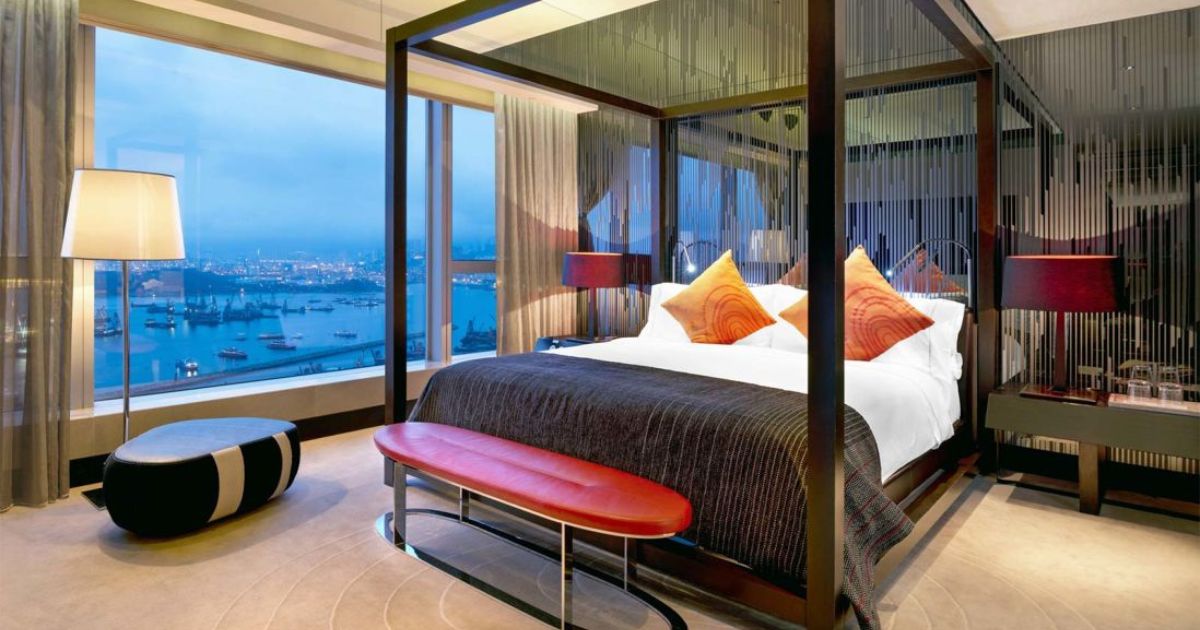
Luxury hotels aim to provide an unparalleled level of comfort and sophistication to their guests, so they often opt for premium-quality bedding materials and luxurious finishes. Here are the types of bedding commonly used in luxury hotels:
Table Of Contents
- What Does A Hotel Bedding Set Typically Consist Of?
- Common Fabrics Used For Hotel Quality Bedding
- What Hotels Look For In Bedding
- Hotel Mattresses And Pillows
- Why Don't Hotels Use Synthetic Materials For Their Bed Sheets?
- What About The Thread Count?
- FAQs
- Conclusion
Hotel bedding is indeed a crucial element in creating a comfortable and luxurious experience for travelers. Exploring the fabrics, thread counts, and other factors that contribute to the quality of hotel bedding can offer valuable insights into what makes for a restful night's sleep away from home. Let's dive in and uncover the secrets behind the comfort of hotel bedding!
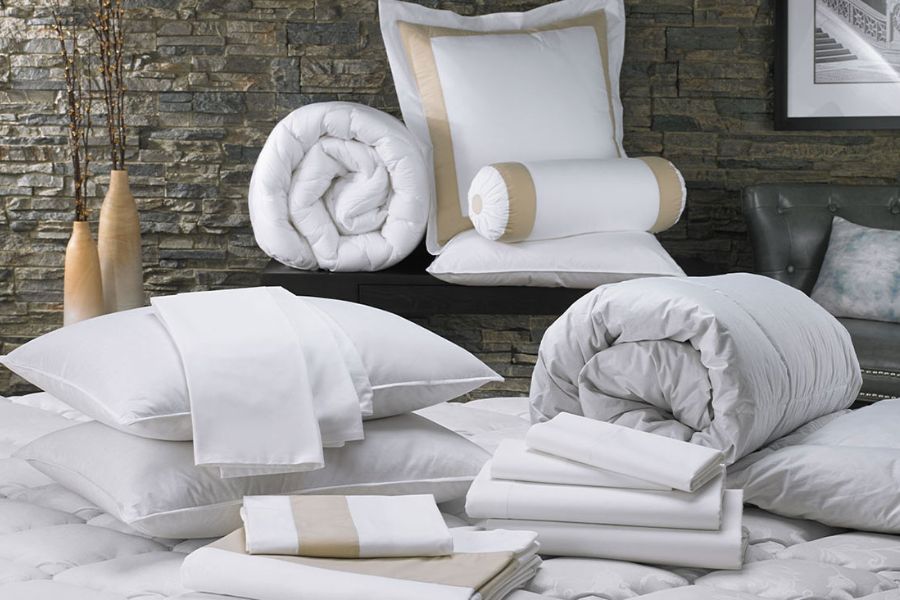
WHAT DOES A HOTEL BEDDING SET TYPICALLY CONSIST OF?
While each hotel is slightly different, most high-end hotels bedding sets include the following:
- Fitted Sheets
- Flat Sheets
- Duvets
- Duvet Covers
- Blankets
- Pillowcases
- Sleeping Pillows
- Decorative Cushions
- Mattress Protector
- Bed Runners
The items included in the hotel bedding set will also depend on how many stars the hotel has, the size of the bed, and the climate of the location you're visiting.

 -25%
-25% 
 -15%
-15% 
 -25%
-25% 
 -25%
-25% 
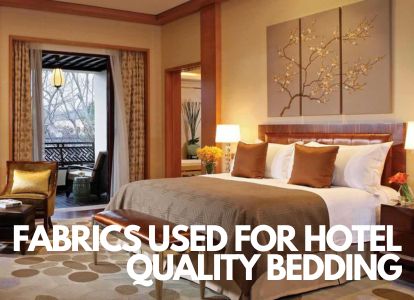
Choice of fabrics for hotel-quality bedding is crucial in providing guests with a comfortable and luxurious sleep experience. Here's a closer look at some popular fabrics commonly used in luxury hotel bedding
EGYPTIAN COTTON
Renowned for its softness, durability, and breathability, Egyptian cotton is considered one of the finest cotton varieties available. It is known for its long staple fibers, which result in a smoother and more luxurious feel. Egyptian cotton bedding is highly sought after for its exceptional comfort and quality.
COTTON SATEEN
Cotton sateen is a weave made from cotton fibers, known for its silky-smooth feel and subtle sheen. It is woven in a way that creates a luxurious, lustrous surface on one side while remaining soft and breathable. Cotton sateen bedding is often favored for its elegant appearance and luxurious drape.
LINEN
Linen is a natural fabric made from the fibers of the flax plant. It is prized for its exceptional breathability, moisture-wicking properties, and durability. Linen bedding is known for its relaxed, lived-in look and feel, making it a popular choice for hotels aiming to create a cozy and inviting atmosphere.
BAMBOO
Bamboo bedding is made from the fibers of the bamboo plant, known for its softness, smooth texture, and moisture-wicking properties. Bamboo bedding is often hypoallergenic, making it an excellent choice for guests with sensitive skin or allergies. It is also prized for its sustainability, as bamboo is a fast-growing and renewable resource.
MICROFIBERE
Microfiber bedding is made from finely woven synthetic fibers, known for their softness, durability, and wrinkle resistance. Microfiber bedding is often more affordable than natural fabrics and is easy to care for, making it a practical choice for hotels looking to provide guests with high-quality bedding at a lower cost.
Each of these fabrics offers unique benefits and characteristics, allowing hotels to cater to the diverse preferences and needs of their guests while ensuring a comfortable and luxurious sleep experience.
****When choosing hotel-quality bedding, consider factors such as fabric type, thread count (for cotton sheets), weave (sateen, percale, etc.), and your personal preferences for comfort and maintenance.


WHAT HOTELS LOOK FOR IN BEDDING
LUXURIOUS FEEL
The guest's comfort is a main priority for most high-end hotels and this means offering bedding with high thread counts and quality material for a luxurious and soft feel. Various moisture-wicking fabrics, such as cotton and linen, also help with comfort, breathability, and odour control.
LOOK
The aesthetics of a hotel room are also very important. While most high-end hotels use white bedding for a crisp look and feel, many hotels prefer colourful or patterned bed linen to fit in with their specific interior design.
DURABILITY
Hotel sheets undergo a significant amount of wear and tear, so the fabric must be highly durable. Weak materials need to be replaced more often, which can ultimately result in unnecessary expenditure for the hotel.
EASY TO CLEAN
Hotels typically wash their bed sheets and duvets every few days, depending on their guest turnover. This is why it is so important to invest in bedding fabrics that are relatively easy to clean and dry quickly. Otherwise, the cleaning staff have an enormous and time-consuming job on their hands.
HYPOALLERGENIC
Having an allergic reaction to bed linen can ruin your hotel experience. This is why most five-star hotels invest in hypoallergenic materials. Examples of hypoallergenic materials include silk, linen, bamboo, cotton fabrics, and other natural materials.
HOTEL MATTRESSES AND PILLOWS
the mattress and pillows are vital components of the overall bedding quality, contributing significantly to a guest's comfort and sleep experience. Luxury hotels often invest in high-quality mattresses and pillows to ensure guests enjoy a restful night's sleep.
When it comes to pillows, luxury hotels often opt for premium materials such as goose feathers, duck feathers, or down alternatives. These pillows offer plushness and support, conforming to the head and neck for optimal comfort. Bamboo pillows have also gained popularity for their natural breathability, hypoallergenic properties, and sustainability.
By selecting high-quality mattresses and pillows, luxury hotels can enhance the overall sleep experience for their guests, ensuring they wake up feeling refreshed and rejuvenated. These investments in bedding quality are essential for maintaining the hotel's reputation for luxury and comfort.
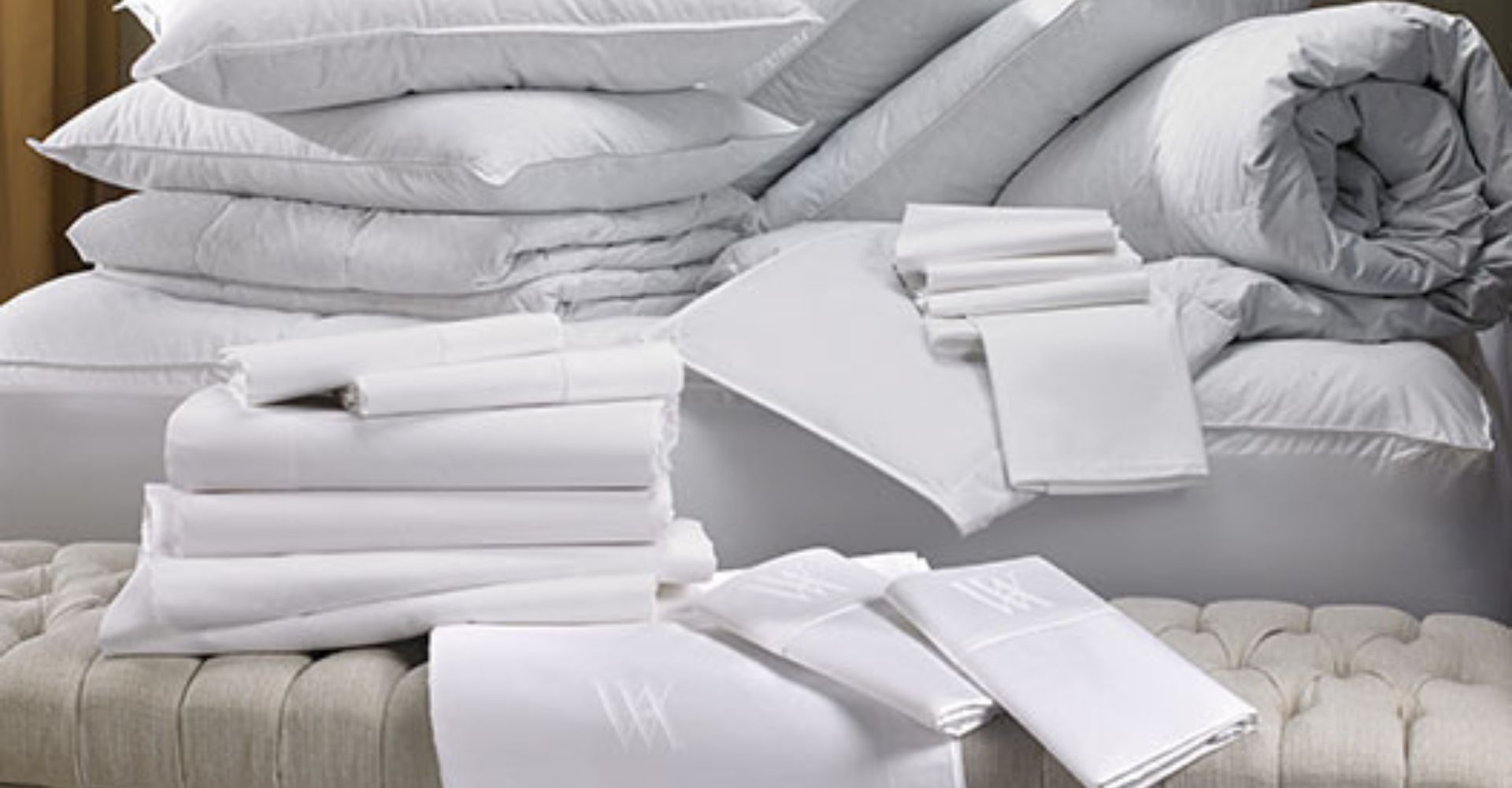
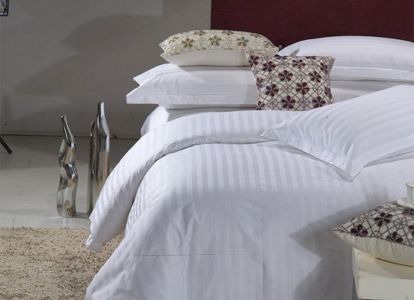

 -25%
-25% 
 -25%
-25% 
 -25%
-25% 
 -25%
-25% WHY DON'T HOTELS USE SYNTHETIC MATERIALS FOR THEIR BED SHEETS?
Hotels generally prioritize guest comfort and satisfaction, and the choice of bedding materials plays a significant role in achieving this. While synthetic materials like polyester can offer benefits such as affordability and durability, they often lack the breathability, moisture-wicking properties, and softness of natural fabrics like cotton or linen..
Furthermore, synthetic fibres are known to trap heat, which can result in an uncomfortable sleeping experience. Polyester can also cause skin irritation during the night, especially for those who have allergies and sensitive skin.
WHAT ABOUT THE THREAD COUNT?
Thread count is an important consideration when selecting bedding for luxury hotels, as it can impact the feel, durability, and overall quality of the fabric. While thread count refers to the number of threads per square inch.
While, thread count can provide some insight into the quality of the fabric, it's essential to consider it alongside other factors when choosing bedding for luxury hotels. By prioritizing comfort, durability, and value, hotels can provide guests with a luxurious and memorable sleep experience.
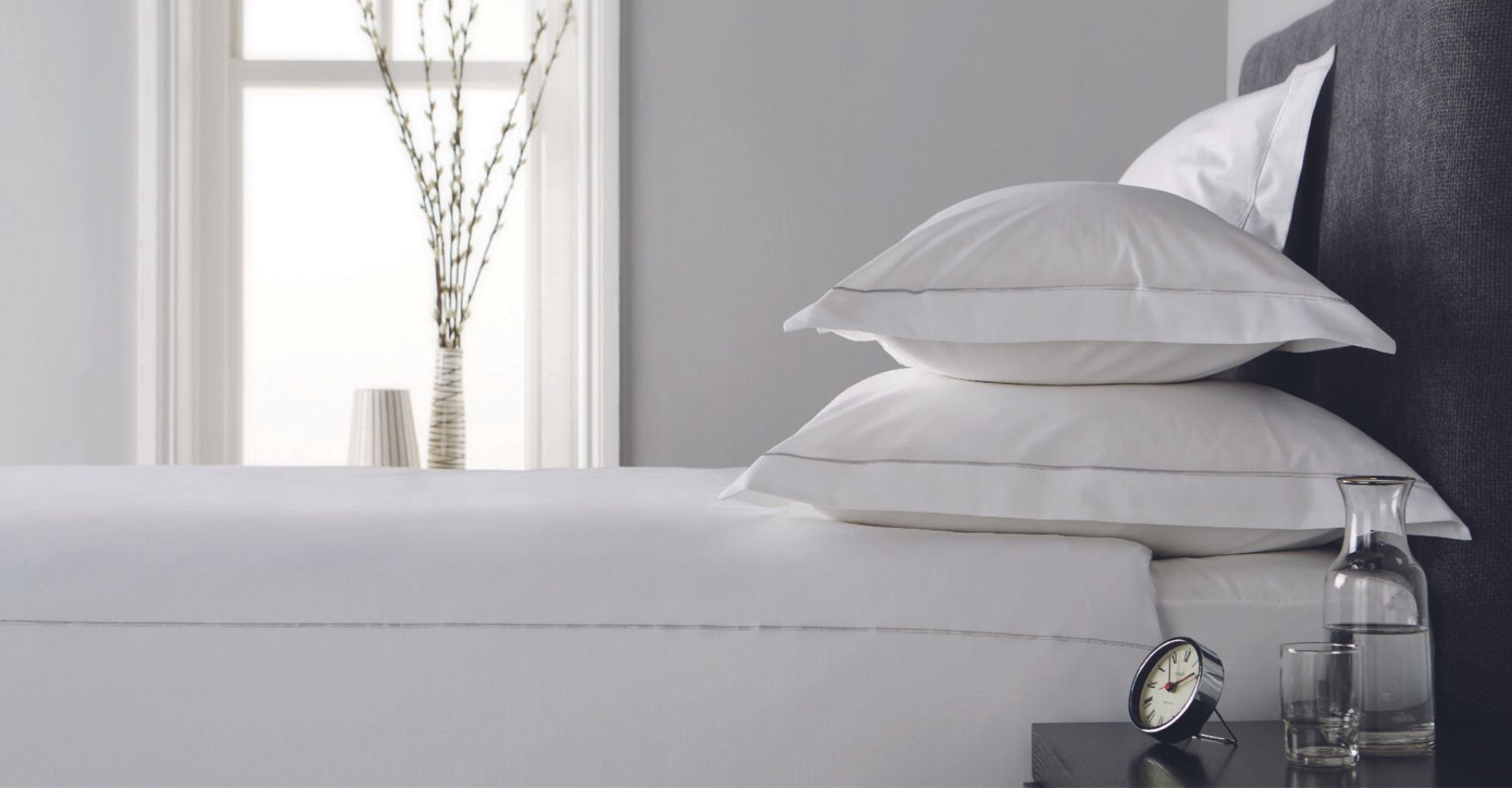
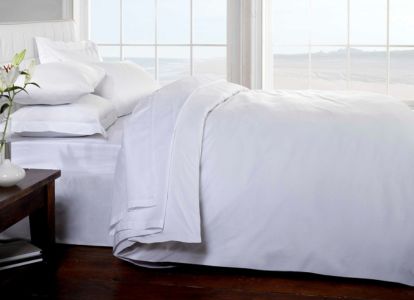
FAQS
WHY IS HOTEL BEDDING USUALLY WHITE?
White bedding is favored by hotels for its cleanliness, practicality, versatility, and association with luxury and sophistication. It helps hotels maintain high standards of cleanliness and hygiene while creating a timeless and elegant aesthetic that enhances the guest experience.
Most of the hotels prefer it is the easiest to clean. Stains can easily be removed from white bed sheets by using bleach.
By offering a range of neutral bedding colors in addition to white, hotels can cater to diverse guest preferences and create personalized and inviting spaces that meet the needs and expectations of their guests. Whether guests prefer the timeless elegance of white bedding or the warmth and versatility of cream, beige, or grey, hotels strive to provide a comfortable and welcoming sleep environment for all.
HOW OFTEN DO HOTELS REPLACE THEIR BEDDING?
The frequency with which hotels replace their bedding can vary depending on several factors, including hotel standards, occupancy rates, and the condition of the bedding. However, most hotels have regular schedules for replacing bedding to maintain cleanliness, hygiene, and guest satisfaction.
WHY IS IT IMPORTANT FOR HOTELS TO OFFER THEIR GUESTS HIGH-QUALITY BEDDING?
Offering high-quality bedding is essential for hotels to ensure guest satisfaction, maintain a competitive edge, build a positive brand image, foster guest loyalty, and promote health and well-being. Investing in superior bedding is an investment in the overall guest experience and the long-term success of the hotel.
AGRL HOME DECOR a reputable and established company in Sri Lanka, especially known for its high-quality bed linen suitable for both homes and hotels. The fact that it's a family-owned business with its own factory suggests a commitment to quality control and attention to detail in their manufacturing processes.







Validate your login